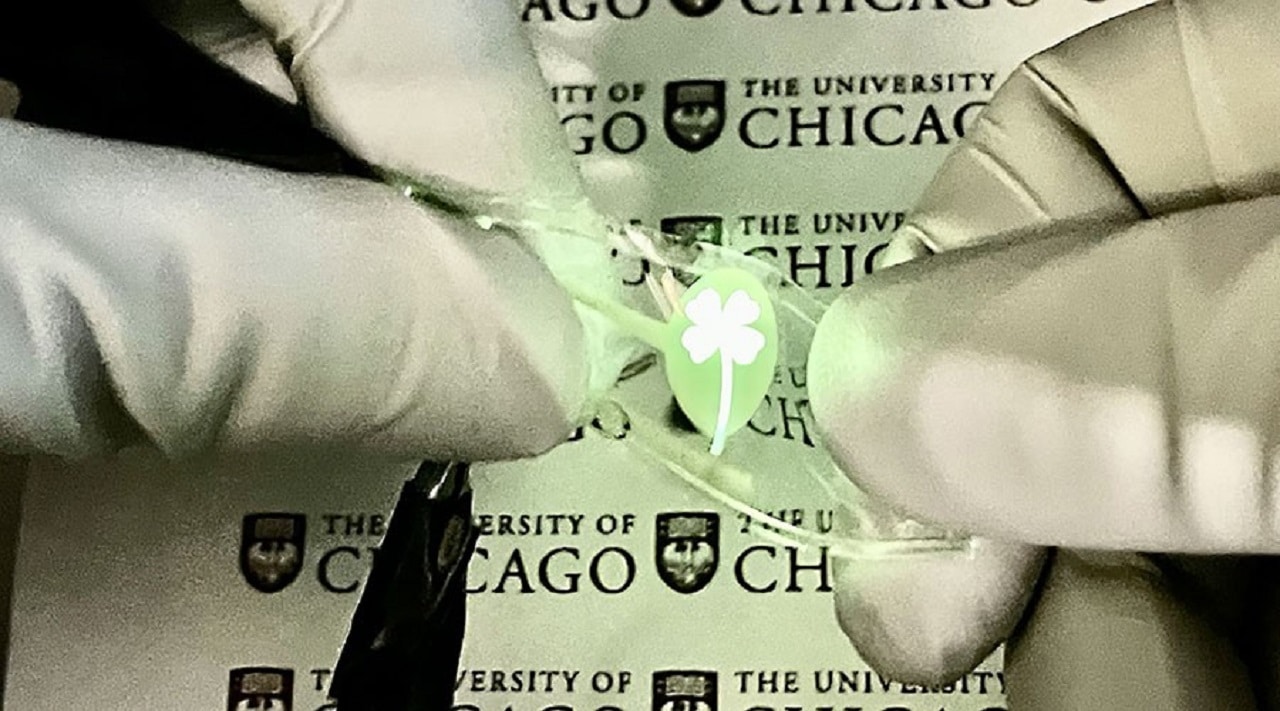
Researchers at the Pritzker School of Molecular Engineering (PME) at the University of Chicago have developed a stretchable light-emitting material that you need to finally be able to create truly flexible screens. The new material can stretch more than twice its original length without disrupting its ability to emit light and display a clear image.
The displays on most high-end smartphones and a growing number of televisions use OLED (organic light-emitting diode) technology, which sandwiches small organic molecules between conductors. These small molecules emit a bright light when an electrical current is switched on. The technology is more energy-efficient than older LED and LCD displays and is praised for its sharp pictures. However, the molecular building blocks of OLEDs have tight chemical bonds and stiff structures.
“The materials currently used in these state-of-the-art OLED displays are very brittle; they don’t have any stretchability,” said Professor Sihong Wang, who led the research with Professor Juan de Pablo. “Our goal was to create something that maintained the electroluminescence of OLED but with stretchable polymers.”
It takes long polymers with bendable molecular chains to imbue stretchability into materials, while molecular structures are required for organic material to emit light very efficiently. Researchers set out to create new polymers that integrated both properties.
“We have been able to develop atomic models of the new polymers of interest and, with these models, we simulated what happens to these molecules when you pull on them and try to bend them,” explained de Pablo. “Now that we understand these properties at a molecular level, we have a framework to engineer new materials where flexibility and luminescence are optimized.”
Armed with computational predictions for new flexible electroluminescent polymers, Wang and de Pablo built several prototypes. As the model had predicted, the materials were flexible, stretchable, bright, durable, and energy efficient.
Their design is based on the use of “thermally activated delayed fluorescence,” which lets the materials convert electrical energy into light in a highly efficient way. This third-generation mechanism for organic emitters can provide materials with performance on par with commercial OLED technologies.
Previously, Wang developed stretchable neuromorphic computing chips that can collect and analyze health data on a kind of flexible Band-Aid. The ability to now create stretchable displays adds to his growing suite of tools for next-generation wearable electronics.
The new light-emitting material has a wide range of applications, from wearable electronics and health sensors to foldable computer screens.
In the future, the team is planning to develop new iterations of the display, integrating additional colors into the fluorescence and improving the efficiency and performance.
“The goal is to eventually get to the same level of performance that existing commercial technologies have,” said Wang.
Journal reference:
- Wei Liu, Cheng Zhang, Riccardo Alessandri, Benjamin T. Diroll, Yang Li, Heyi Liang, Xiaochun Fan, Kai Wang, Himchan Cho, Youdi Liu, Yahao Dai, Qi Su, Nan Li, Songsong Li, Shinya Wai, Qiang Li, Shiyang Shao, Lixiang Wang, Jie Xu, Xiaohong Zhang, Dmitri V. Talapin, Juan J. de Pablo and Sihong Wang. High-efficiency stretchable light-emitting polymers from thermally activated delayed fluorescence. Nature Materials, 2023; DOI: 10.1038/s41563-023-01529-w
High-efficiency stretchable light-emitting material for flexible screens
Source: Tambay News

0 Comments